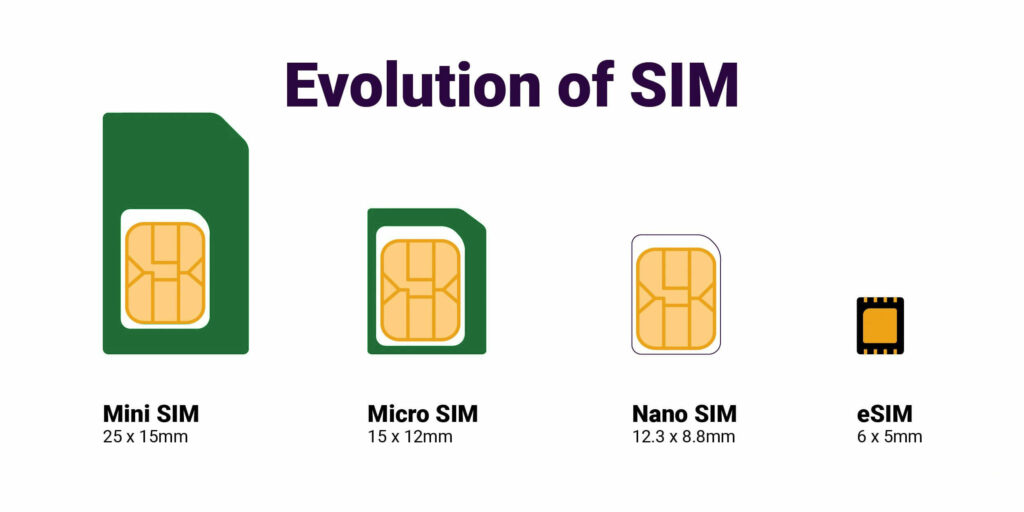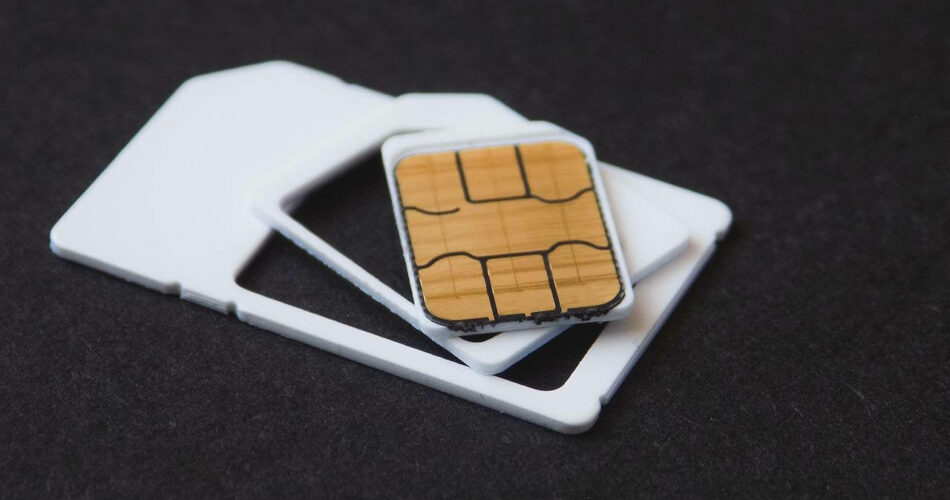SIM stands for’subscriber identity module,’ and is traditionally a small plastic card that slots into your mobile phone. It stores information such as your phone number and enables you to make and receive calls, texts, and use data on your phone.
However, eSIMs are intended to replace traditional physical SIM cards (the ‘e’ stands for embedded, in case you were wondering). An eSIM is a small chip embedded in your handset rather than a removable plastic card inside your phone. You cannot take it out and replace it with another phone. The data on an eSIM can be rewritten. This means you can switch networks without having to remove your SIM card and insert a new one. The day when eSIMs completely replace plastic SIM cards is probably still a long way off. eSIMs are currently more commonly used as the second SIM in a dual-SIM handset.

What are the advantages of an eSIM?
- Switching mobile networks is much easier with an eSIM. Instead of ordering a new SIM card, waiting for it to arrive, and then inserting it into your phone, you can change networks with a phone call or online. You won’t even need to look for a SIM ‘ejector tool’ to get the old SIM out of your phone.
- You can switch to another network temporarily. One eSIM can hold up to five virtual SIM cards at once. This means you can quickly switch between networks if you find yourself in an area where your usual network has no signal.
- Allows you to have multiple SIM cards. eSIMs provide the same benefits as dual-SIM phones with two slots for traditional plastic SIM cards, the most obvious of which is the ability to have two phone numbers on one device.
- It takes up less physical phone space. Another benefit of eSIMs is that they will eventually do away with the need for a physical SIM card and tray. Smartphone manufacturers may use this space to increase the size of a phone’s battery or to add more features to a handset. Fewer holes in a handset also means greater protection from moisture and dust, resulting in fewer breakdowns.
What are the disadvantages of an eSIM?
- It is more difficult to switch devices quickly. If your phone stops working, you can easily remove the SIM card and insert it into another phone, retaining your number and contact information (if your contacts are stored on the SIM).
- You can’t also remove an eSIM from a device, which may be considered a disadvantage if you’re concerned about your movements being tracked. However, this may be an advantage because phone thieves will be unable to easily conceal the location of a stolen phone.

